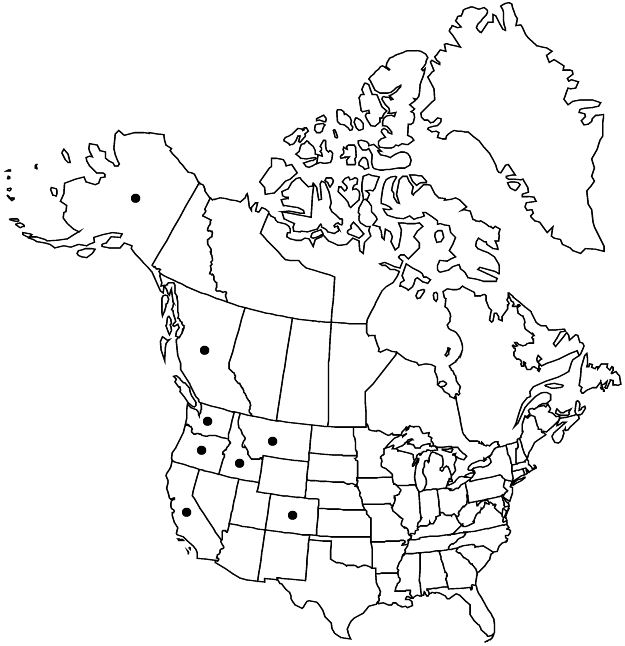Spiraea douglasii
Fl. Bor.-Amer. 1: 172. 1832.
Shrubs, 10–30 dm. Stems erect to ascending, branched. Leaves: petiole 3–5 mm; blade bicolorous, elliptic to obovate, 3–10 × 0.5–4 cm, chartaceous, base cuneate, margins serrate distally from middle, venation pinnate craspedodromous, secondary-veins prominent, apex acute to obtuse, abaxial surface lanate to tomentose, glabrous, or pubescent, adaxial glabrous. Inflorescences mostly terminal, conic panicles, [5–] 8–25 × 3–6 [–10] cm height 2–4 times diam. branches glabrous or glabrescent to tomentose. Pedicels 1–3 mm, glabrous or tomentose. Flowers 2–4 mm diam.; hypanthia hemispheric, 1 mm, abaxial surface tomentose, adaxial glabrous; sepals ovate, 1 mm; petals light to dark-pink, ovate to obovate, 1–2 mm; staminodes 0; stamens 25–35, 2–3 times petal length. Follicles oblanceoloid, 2.5–3 mm, shiny, glabrous, adaxial suture sometimes ciliate.
Distribution

B.C., Alaska, Calif., Colo., Idaho, Mont., Oreg., Wash., in Europe
Discussion
Varieties 3 (3 in the flora).
Spiraea douglasii has been popular in the garden trade and was used to develop a number of hybrids. In North America, the hybrid most likely to be encountered is S. ×billardii Hortus ex K. Koch, because the parental species are both native, although S. salicifolia was widely imported from Europe and thus S. ×pseudosalicifolia Silverside would also likely be encountered.
Selected References
None.
Lower Taxa
Key
| 1 | Leaf abaxial surfaces lanate to tomentose. | Spiraea douglasii var. douglasii |
| 1 | Leaf abaxial surfaces glabrous or pubescent | > 2 |
| 2 | Pedicels, hypanthia, and sepals tomentulose to sparsely pubescent. | Spiraea douglasii var. menziesii |
| 2 | Pedicels, hypanthia, and sepals glabrescent or glabrous. | Spiraea douglasii var. roseata |